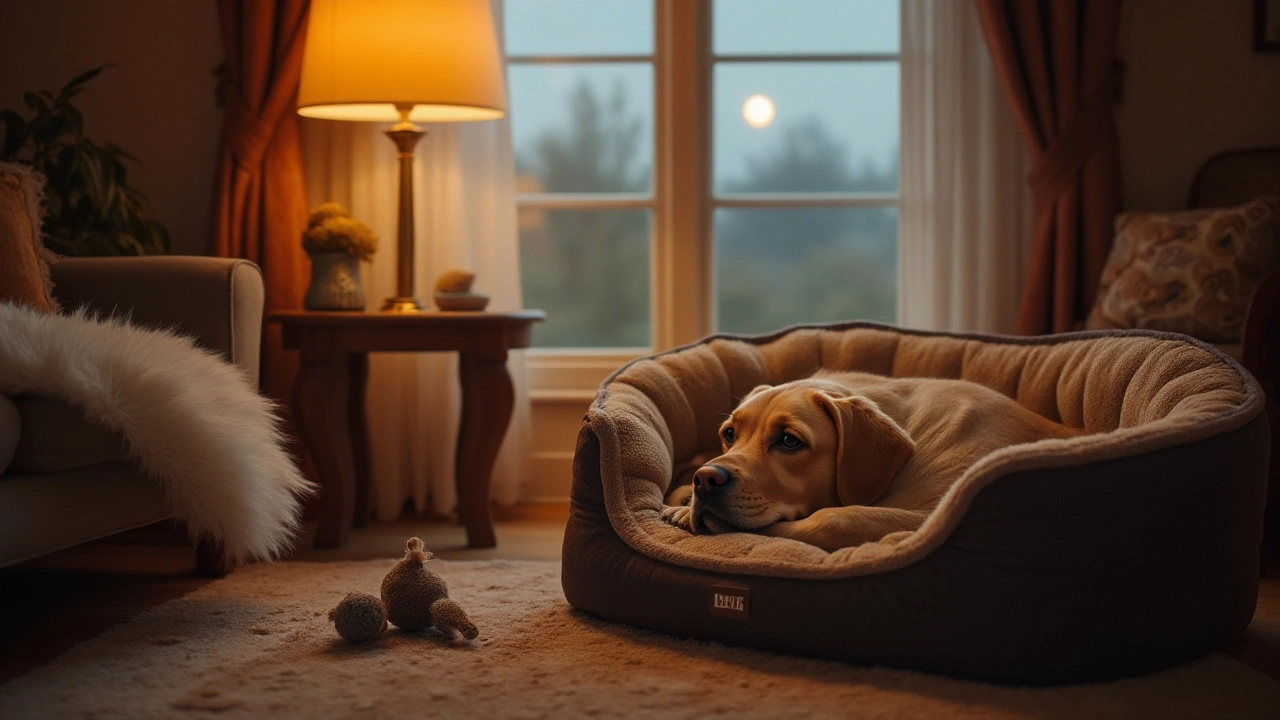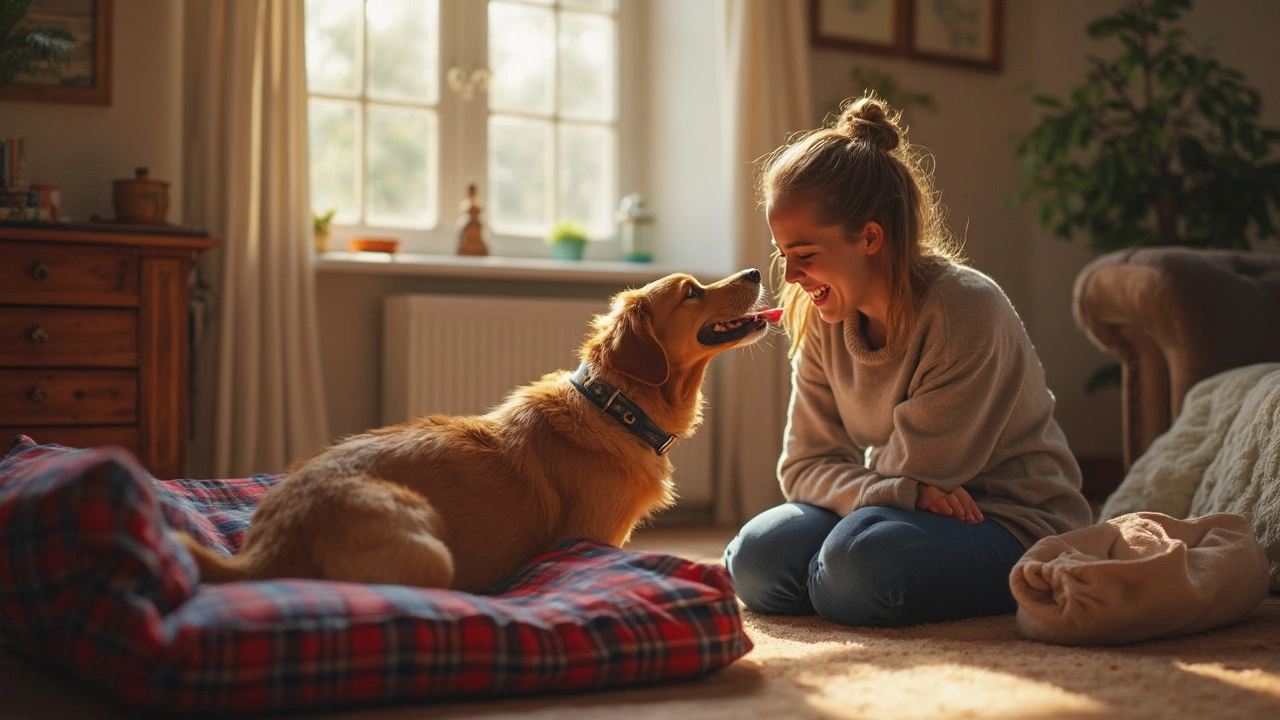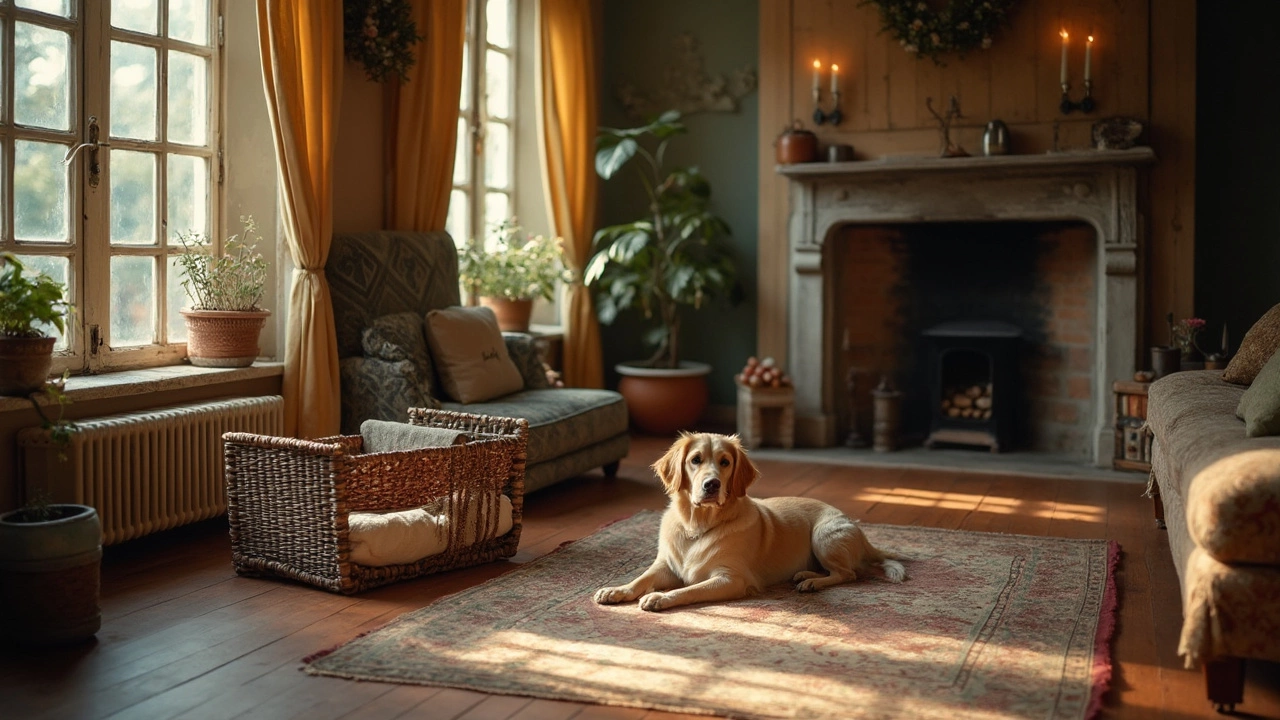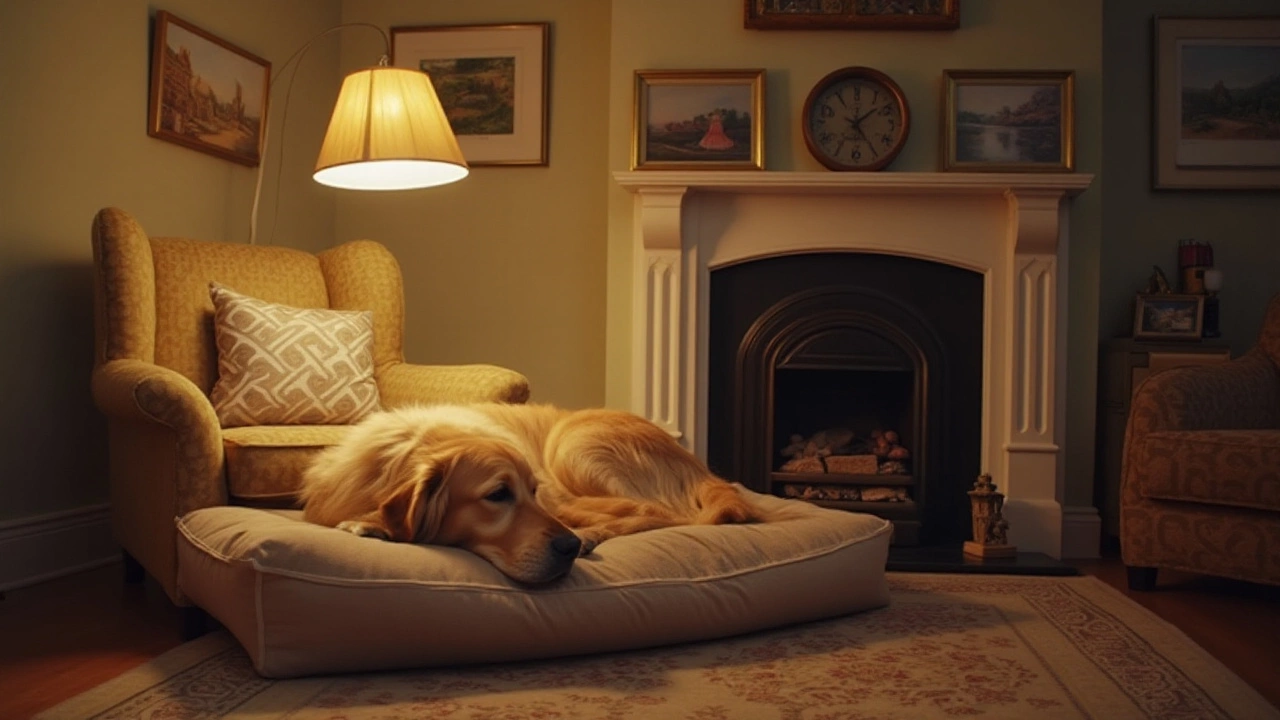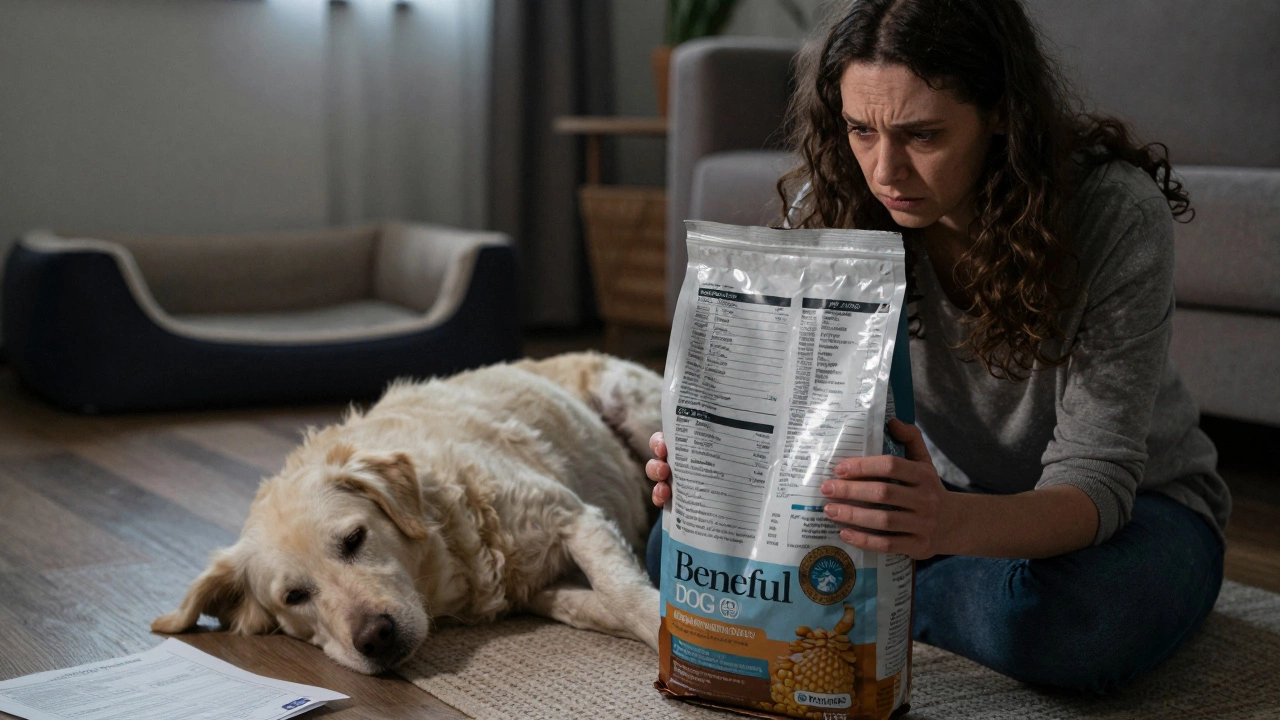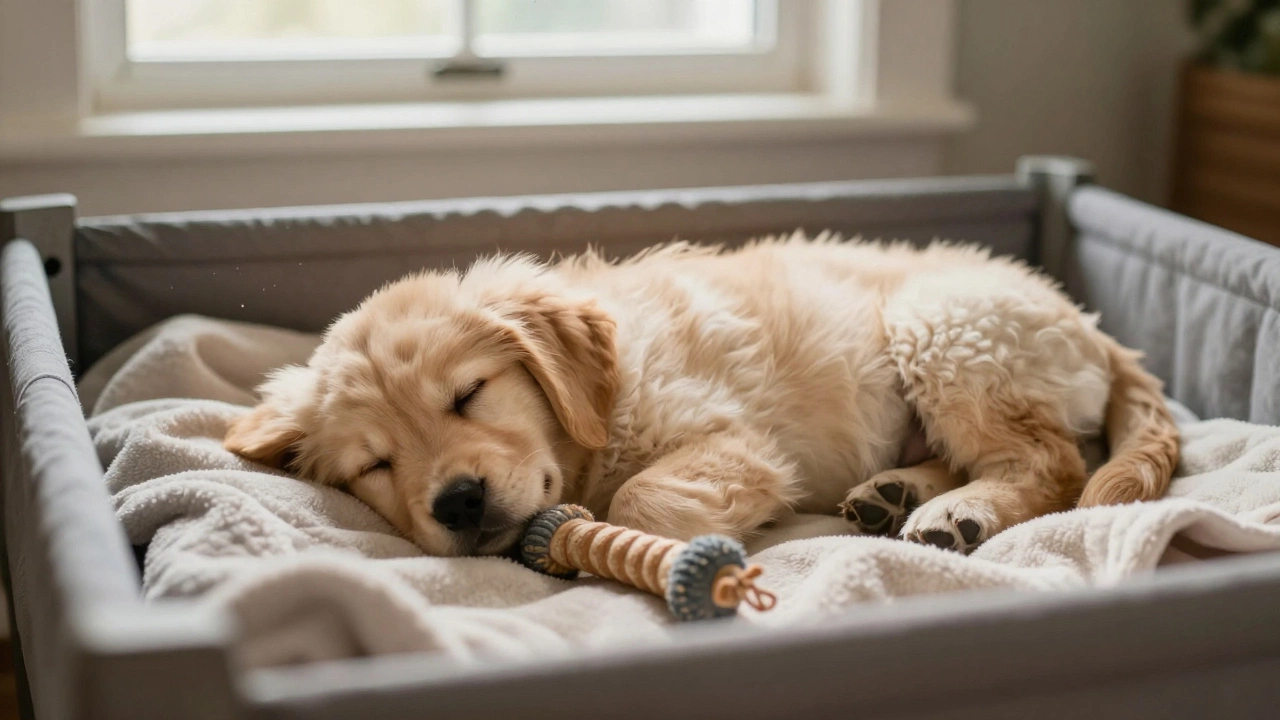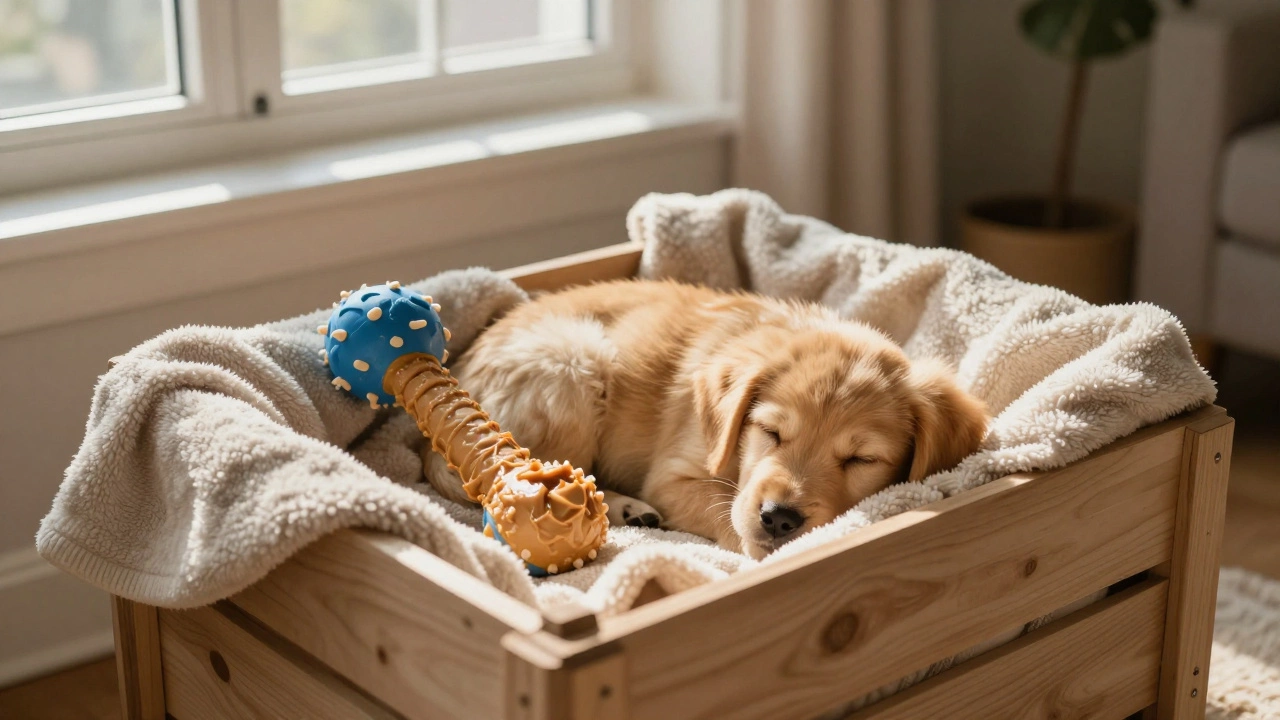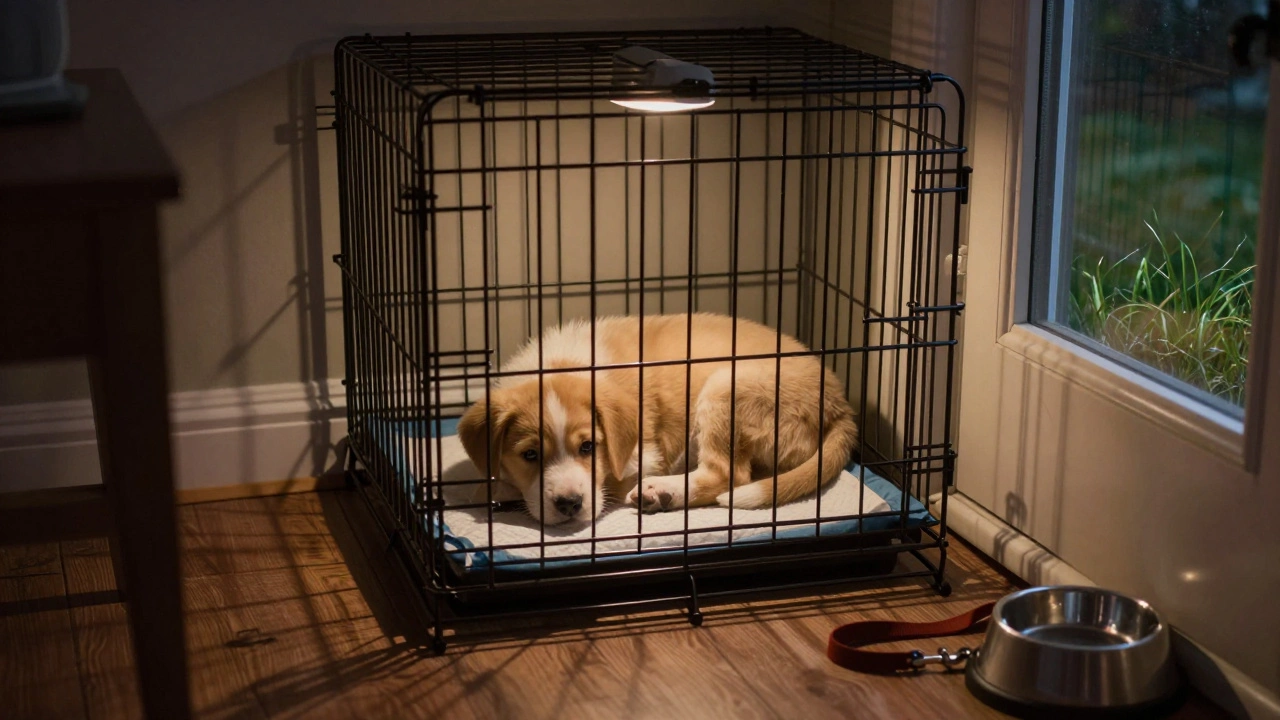Have you ever pondered whether flipping the light switch before stepping out the door might make a difference for your canine companion? While it might seem trivial, leaving a light on for your dog can have surprising effects on their mood and rest. Recognizing how our pets perceive their environment can help us make choices that promote their well-being.
Dogs experience the world differently than we do, and their sensory needs can vary significantly. As we explore this topic, consider how their vision works in light and darkness. From the comfort of their beds, the presence or absence of light could influence not only their anxiety levels but also the quality of their sleep.
In the following paragraphs, we'll look at the pros and cons of keeping the lights on when you’re not home. We'll also provide you with practical insights into making your home a more comfortable and less stressful place for your dog.
- Understanding Dog Vision and Light
- The Role of Lights in Dog Anxiety
- Benefits of Leaving a Light On
- Potential Downsides of Artificial Light
- Dog Beds That Enhance Comfort
- Practical Tips for Home Lighting
Understanding Dog Vision and Light
It's fascinating to consider how our furry friends see the world. While humans rely heavily on sight to interact with their surroundings, dogs experience things a bit differently. Canines have a unique structure in their eyes known as the tapetum lucidum, which enhances their ability to see in low-light conditions. This reflective layer allows them to catch any light that has passed through the retina, giving it a second chance to be captured. This explains why you might notice your dog moving confidently in dim settings.
Dogs tend to have a wider field of vision than humans, although this can vary depending on their breed. Generally speaking, they can see approximately 250 degrees around them, offering a panoramic view of their world. This is significantly greater than the human average of around 180 degrees. While this can benefit them by spotting potential dangers or signals, it's worth noting that their depth perception does not measure up to ours. They might struggle with accurately gauging distances, especially in an environment cluttered with shadows.
Apart from structural differences, there's the matter of colors. Contrary to popular belief, dogs do see colors; however, their palette is distinct from what we experience. They primarily see in blue and yellow hues, in contrast to the vibrant spectrum humans enjoy. This makes them especially sensitive to blue colors, which can sometimes affect how they respond to lighting and their dog comfort. For instance, the calming blue glow of a nightlight could potentially soothe your anxious pet better than a yellow one.
"While dogs can't appreciate the brilliance of a rainbow like humans do, their more subdued color palette is adapted for dusk and dawn hunting in the wild," notes Dr. Jessica Vogelsang, a renowned veterinarian.
Recent studies have suggested that natural light and adequate darkness are crucial for a dog's circadian rhythm. Just like humans, exposure to natural daylight can help maintain regular sleep cycles. Too much artificial light, particularly from bulbs that emit a strong blue hue, might disrupt these cycles, resulting in restlessness during the night. Balancing a natural light environment with the convenience of modern living requires thoughtful consideration.
Recognizing how our dog's sleep patterns are influenced by their environment can lead to an optimized lighting setup at home. This not only involves choosing the right bulbs but also considering how much ambient light enters where your dog rests. Providing a cozy, appropriately lit spot for them could alleviate anxiety and maximize relaxation.
If you're curious about the specifics of light intensity and its direct effect on canine behavior, there is burgeoning research that sheds light on this topic. For instance, findings from animal behaviorists suggest that intensity levels between 5-10 lux are generally considered comforting for dogs at night, which might be achieved through the use of a gentle nightlight.
The Role of Lights in Dog Anxiety
The world looks very different through the eyes of a dog. Whereas humans largely navigate their environments with sight as their primary sense, dogs rely substantially on their keen sense of smell and hearing. Yet, vision still plays a vital role in how your furry friend feels, especially when you’re not home. Many pet owners grapple with the decision to leave a light on or off when they leave, and understanding how lighting affects your dog’s anxiety levels can be crucial in making that choice. An abundance of anecdotal evidence from pet owners suggests that dogs left in complete darkness tend to experience heightened separation anxiety which can manifest in destructive behavior or excessive barking.
Lights can serve as an anchor of comfort for some dogs, making the environment feel less alien when their human companions aren't around. Imagine being a small creature in a still and silent room, shadows creeping here and there — it could be rather nerve-wracking, right? A dim nightlight or a softly lit room can mimic the security of daylight, reducing stress. According to a survey by the American Kennel Club (AKC), approximately 67% of dog owners have noted measurable improvements in their dogs’ behavior when they use lights versus when they leave their dogs in darkness.
"Light isn’t just about functionality; it’s a tool to create a safe and calming space," says Dr. Sarah Jones, a renowned veterinarian specializing in animal psychology. "The right lighting can alleviate fear and uncertainty in our pets, much like it can enhance our own moods."
This doesn’t mean all dogs react the same way. It's essential to observe your own dog's behavior to detect any patterns. Does your dog prefer a dark corner over a brightly lit space, or does he seem restless when the room gets shadowy? Your observations can inform decisions about lighting. Yet, it is equally important to remember that while the right amount of light might help, too much can disrupt a dog's natural circadian rhythms. This is particularly true during the night if the light is too bright, causing disturbances in sleep patterns. So, finding the balance that suits your dog's unique preferences matters greatly.
However, the impact of light varies, depending on factors like the dog’s breed, age, and past experiences. Puppies or recently adopted dogs from shelters may find lights reassuring as silence and dark environments could trigger memories of abandonment or harm. Meanwhile, older dogs might seek dimmer conditions for peace and sleep, coinciding with their reduced mobility and increased need for rest. The key lies in personalization and finding what suits your pet best. Experimenting with different types of lighting, such as soft bedside lamps or automatic nightlights, can ease transitions and reduce anxiety.
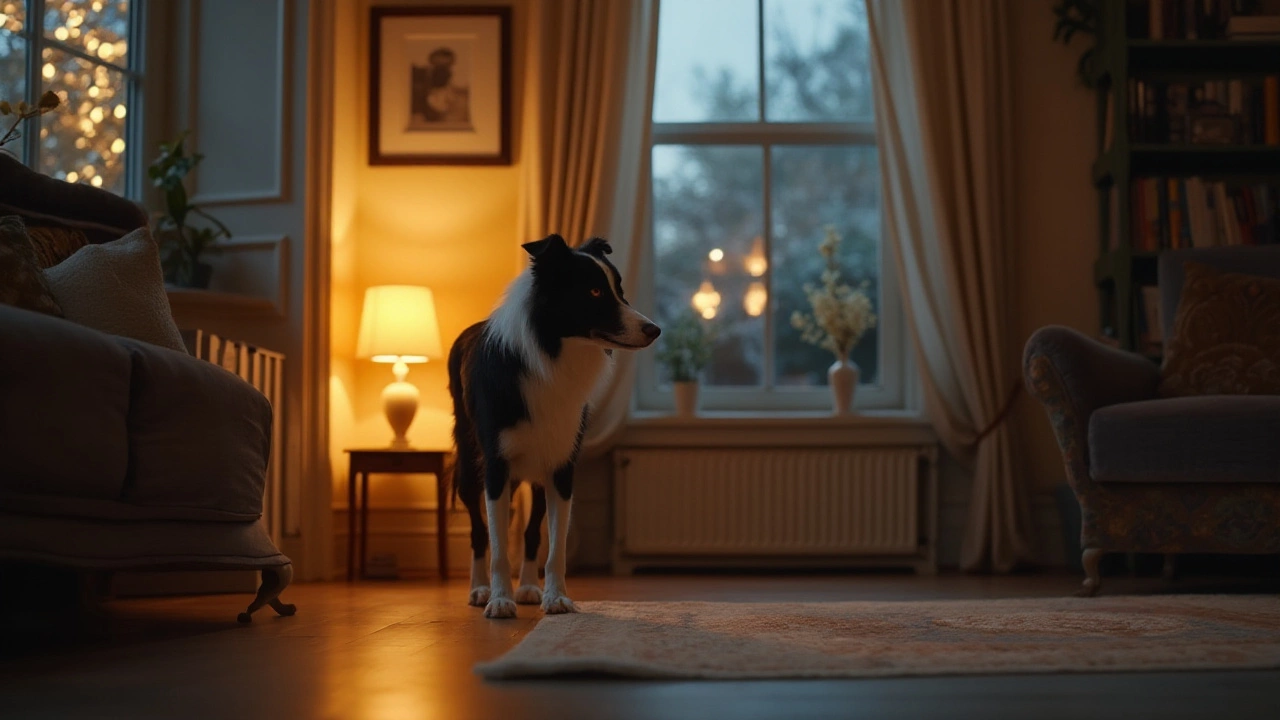
Benefits of Leaving a Light On
When considering the comfort of our pets, it's common to wonder if leaving a light on can make a significant difference. Our four-legged friends, just like us, navigate the world using their senses. Among these senses, vision plays a crucial role, but it functions differently for dogs than it does for humans. Dogs possess fewer cones in their eyes, which means their perception of color is limited. However, their rod cells are more numerous, allowing them to see better in low light conditions. This explains why many dogs navigate with relative ease in dimly lit environments. So why bother with lights? For some fur companions, a gentle night light can offer a sense of security, especially if they're housed in large or new spaces. This additional light can be particularly soothing for dogs who tend to experience separation anxiety or nervousness when you're not around.
Many pet owners report changes in behavior or mood with strategic lighting adjustments for their animals. According to dog comfort specialists, the ambient glow helps pups unfamiliar with certain environments to better adjust, thereby reducing stress-induced behaviors such as whimpering or destructive chewing. Dogs, like humans, can develop fears of the dark, especially if a sudden noise or movement aggravates their anxiety. A small light source helps mitigate these reactions. As Dr. Alexandra Horowitz, a well-respected animal cognition researcher, puts it:
"Providing a comforting, softly illuminated environment can aid in reducing nighttime anxieties for some dogs, encouraging calmness until the familiar face of their owner returns."For many older dogs, whose vision might slowly be declining due to age-related changes, a light during evening hours aids in navigating around without difficulty, supporting their independence and dignity.
However, it's crucial to balance lighting to avoid overstimulation. Too much brightness can interfere with a dog's natural sleep cycle, potentially leading to prolonged restlessness or even behavioral changes when they're supposed to be relaxed. Opt for dim, warm lights, which can blend naturally with a dog's organic daytime rhythm. Choosing LED night lights designed specifically for pet areas is a great way to cater to your dog's needs while minimizing excessive energy consumption. A thoughtfully lit environment not only benefits the dog's emotional health but can also strengthen the bond between pets and their owners, knowing that their comfort is being prioritized even in their absence. Thus, pet lighting plays a subtle yet vital role in ensuring your companion's happiness and relaxation, melding seamlessly with the comforting plushness of their dog beds.
Potential Downsides of Artificial Light
While many pet owners believe leaving a light on can ease their dog’s anxiety, it's important to consider the possible drawbacks of artificial lighting. One significant issue is that bright artificial light can interfere with your dog’s natural circadian rhythms. Dogs have their own inner clock, much like humans do, which is heavily influenced by light and darkness. Prolonged exposure to artificial lighting might confuse this system, potentially leading to disturbed sleeping patterns. This disruption can manifest as increased restlessness or agitation, which ironically might exacerbate the same anxiety that you're trying to alleviate by leaving a light on.
Another aspect to consider is the effect of certain types of light. Fluorescent and LED bulbs, often used for their energy efficiency, can sometimes emit a subtle flicker that is hardly noticeable to the human eye but can be disturbing for dogs. This flicker, coupled with a constant light source, might not just impact their rest but can also strain their eyes over time. Choosing the right bulb can mitigate these effects, yet awareness is key. Moreover, it's worth noting that dogs do not require light to navigate dark spaces as they possess far superior night vision compared to humans, thanks to a higher number of rod cells in their retinas.
Impact on Behavioral Health
Dogs, like other animals, have evolved specific behaviors and adaptations to survive and thrive in various lighting conditions. By altering their environment with artificial lighting, we may inadvertently be affecting their natural behaviors. For example, prolonged light exposure can lead to reduced levels of melatonin, a hormone responsible for regulating sleep and mood. Low melatonin can contribute to heightened anxiety and, in some cases, can even weaken immune response, making dogs more susceptible to illnesses. As humans, we tend to equate light with safety. However, for dogs, a continuous stream of artificial light is not necessarily comforting and may lead to entirely different behavioral repercussions.
According to Dr. Michael Fox, a renowned veterinarian and animal behaviorist, "Dogs are creatures of habit and routine; altering their environment significantly affects their natural coping mechanisms."
Adopting adjustments in lighting can also heavily influence the environment's feel for your dog. Instead of continuous artificial light, consider creating a cozy spot with accessible natural light during the day and perhaps a soft, warm lamp during evenings. A designated comfortable corner, featuring a dog bed that supports their natural lying positions, may serve as a more effective solution for a relaxing environment.
In some cases, it might even be worthwhile consulting with a vet or animal behaviorist if you're unsure how the lighting in your home might be affecting your dog’s health or behavior. By paying attention to how such environmental elements impact our dogs, we can provide better care and improve their quality of life. Stay aware of how your furry friend responds to the lighting changes, and make gradual adjustments to find what suits them best. Remember, every dog is unique, and while certain tips might work for some, they may differ for others.
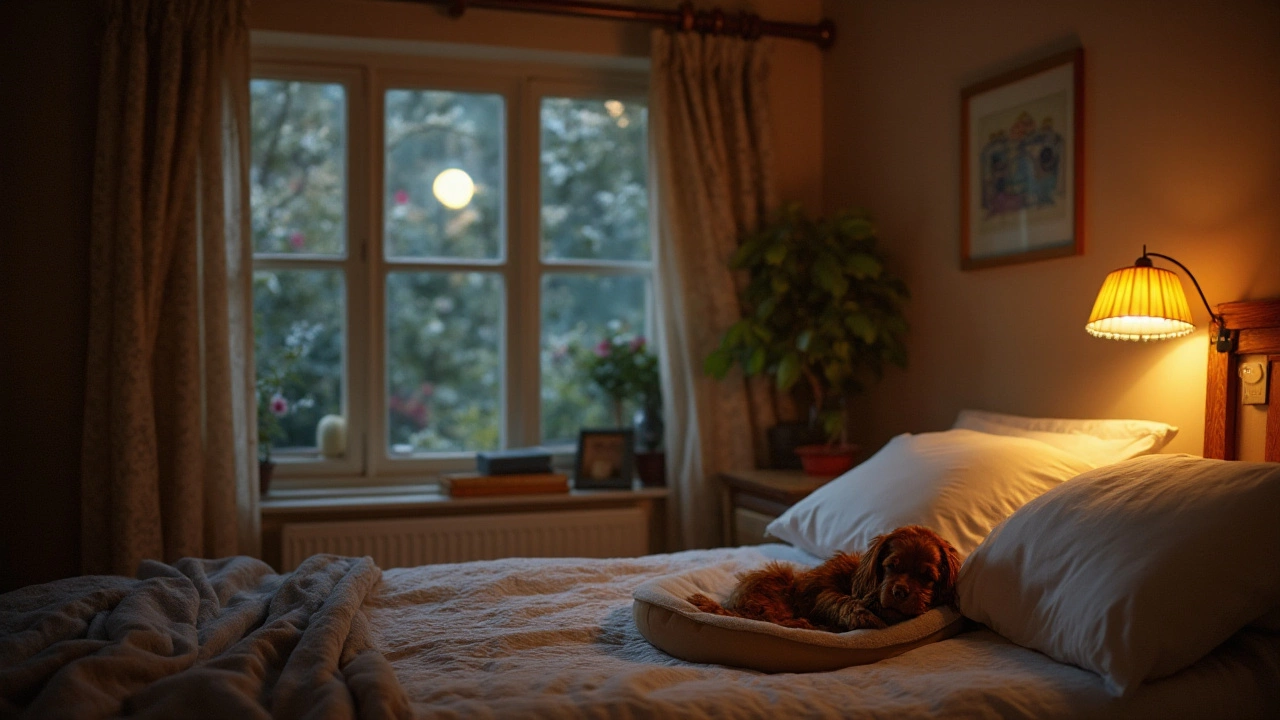
Dog Beds That Enhance Comfort
Choosing the right bed for your dog isn’t just about finding a cozy spot for sleep—it's about providing them with an environment where they can truly relax and feel secure. Just as a human’s sleep quality can be affected by their mattress, a dog’s sleep and comfort can be significantly improved with a well-chosen bed. High-quality dog beds are designed to support joints, offer warmth, and create a sense of personal space that’s crucial for a dog’s mental well-being. As dogs age, they might develop joint stiffness, making orthopedic beds with memory foam a popular choice. These beds contour to the dog's body, relieving pressure points and reducing discomfort.
The material of the dog bed also plays a key role in enhancing comfort. Many dogs appreciate a bed with soft, often washable, materials which are best for fur maintenance and maximizing warmth. Temperature is another factor; some designs feature special cooling gels or heating pads, depending on what makes your dog feel most at ease. Elevated dog beds, crafted with durable mesh fabric on a raised frame, protect dogs from cold floors and improve airflow to keep them comfortable in different seasons. Reflecting on these features can transform where your dog sleeps from just a spot to nap into a much-needed haven of relaxation.
“Just like us, dogs sleep better and more peacefully when they’re comfortable, so be picky and thoughtful about getting a bed.” — Dr. Marty Becker, D.V.M.
Design and size of the dog bed should not be underestimated, considering your dog’s specific needs in conjunction with the layout of your household. For tiny pups or seniors, bolster beds provide a great deal of head and neck support while also serving as a border that mimics a den-like security—the kind of structure pets naturally gravitate toward. Larger dogs might benefit from a spacious flat mattress style bed. It's critical to understand that comfort isn’t just a matter of preference but a necessity for reducing stress-related behaviors, especially when you're away and contemplating whether to leave a light on.
It's helpful to look into features like water and chew resistance, especially for dogs that may express anxiety through chewing, a behavior often seen in younger pets. In these cases, a durable bed can save on frequent replacements. Consider beds that incorporate non-slip bases, which are ideal if your flooring is typically quite slippery. This ensures that no matter how much your pet shifts or moves in the bed, it stays stable, thereby fostering a deeper sense of comfort.
Key Considerations for Choosing Dog Beds
- Look for washable covers to maintain hygiene easily.
- Choose materials based on your dog's coat type and potential allergies.
- Consider the climate—opt for heated or cooling beds as needed.
- Assess the durability based on your pet’s habits and behaviors.
- Check for the right balance of support and softness to aid in restful sleep.
Many pet owners might find themselves investing in several dog beds before discovering the perfect fit for their pet’s unique needs. However, with each characteristic of the dog bed contributing to their comfort and security, the benefits of finding the ‘one’ are manifold. When it comes to your dog’s comfort, ensuring they have the perfect bed means that with light or without, they will rest easy. Thus, supplement your decision on leaving the light on with the deeper knowledge of how your companion spends their nights at home, cozy in a well-chosen bed.
Practical Tips for Home Lighting
Leaving a light on for your dog while you're away can seem like a comforting choice, yet it requires a bit of thought to be truly effective. Start by considering the areas of your home where your dog spends most of their time. Perhaps it's the living room where they curl up on their favorite cozy bed or the kitchen where they eagerly await dinner time. It's beneficial to focus on these spaces when deciding where lights might be most welcome.
If you're contemplating which type of lighting to employ, natural light is always the best choice. Try to arrange your dog’s bed near a window if possible, as this provides a gentle light source that reflects the natural cycle of day and night. However, remember that dogs perceive light differently than humans. Unlike us, they actually have better night vision. Yet, this isn’t to say they are immune to fear of the dark, especially if they've had a bad experience or developed anxiety.
Using the right kind of artificial light can make a difference. LED bulbs are a good option, as they emit a soft light and are energy-efficient. Positioning lamps strategically can create a well-lit space without overwhelming brightness. Additionally, a small nightlight could provide just the right amount of glow to maintain your dog's peace of mind without disrupting their sleep. Always ensure that cords and switches are safely tucked away to prevent accidents.
There's an interesting aspect relating to the color of light. Some studies suggest that blue light can be soothing to pets, unlike the harsher white bulbs. While it might seem like a small detail, color temperature can impact a dog's mood just like it can ours. It's worth experimenting with different hues to find what keeps your pet the calmest while you're gone. A simple, low-cost way to achieve this could be using smart bulbs which allow you to adjust tones and brightness even when you're not at home.
"Consider the rhythm of your home," suggests Dr. Lisa Lippman, a leading Veterinarian in New York City. "Creating a consistent environment for your dog when you're away can significantly lower stress levels and provide comfort."
If your dog seems disoriented or restless, adjusting the lighting might offer improvement. Keeping to a schedule where the lights mimic natural settings can help them find their rhythm again. Remember, consistency is key. Automated timers are an effective tool here, turning on certain lights at specific times to simulate sunrise and sunset, reducing any sudden changes that might unsettle your dog.
Lastly, observe your pet's behavior. Each dog is unique, and while some might nap peacefully in a dimly lit room, others might benefit from more illumination. Take notes on how they respond to different lighting setups. By carefully balancing both natural and artificial sources, you contribute to a more comforting and reassuring atmosphere for your furry friend, ensuring they feel secure whether they're ensconced in their comfy dog beds or roaming their territory.

